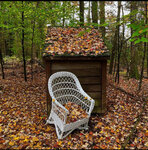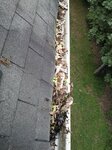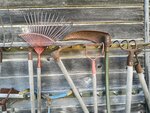 Narrowsburg
NarrowsburgLight Rain Fog/Mist, 43°
Wind: 8.1 mph
 Narrowsburg
Narrowsburg


Fall is a beautiful time of year—a great time to sit on the porch with a hot cup of tea and watch the colorful leaves fall.
But with winter on the way, it’s smart to cut short your porch-sitting and prepare your home for the snowy season. Here are some savvy tips for things to take care of now, to help your home sail through the winter.
Don’t rake all the leaves
In years past, homeowners were convinced that fallen leaves had to be raked and collected into paper or plastic bags. Research has shown that leaves provide a free source of organic fertilizer and improve soil texture by helping the ground to absorb more water and air, leading to healthy plant growth.
The trick is to mow your leaves while dry instead of raking them. The vast majority of plant life, including lawns, will actually benefit from the protective layer that nutrient-rich fallen leaves provide, while the leaves also insulate plants from harsh winter temperatures.
Bring in outdoor plants, furniture and the grill
While the weather is still mild, debug your plants and bring them inside before the first frost hits. Also clean summer yard equipment such as grills, fire pits and outdoor furnishings, and store them in your garage or shed.
Clean and store garden tools and equipment
Do an inventory of your garden tools and check for damage or dullness. Tools should be cleaned, oiled and sharpened before storing away for the winter. Clean mowers with a putty knife, first making sure that everything is turned off before going near the blades. Then scrape off any grass that is caked onto the blades.
This is a good time to change the oil, air filter and spark plug so the mower is in good working order when spring rolls around.
Gasoline doesn’t last forever. In fact, it decomposes quickly. When this happens in a small engine (such as a lawn mower or weed trimmer), it can cause the engine’s carburetor to gunk up, so you might not be able to get it started again when winter is over.
In addition, John Deere offers these preventive steps: If you’ve added stabilizer to your fuel to keep it fresh longer, then fill the gas tank to the top with more stabilized fuel and run the engine briefly to allow it to circulate. If not, wait until the tank is nearly empty from regular use and run the engine (outdoors) to use up the remaining fuel. Check your mower’s manual for other cold-weather storage steps.
Check your snowblower
Don’t wait for the first snowstorm to get your snow-removal equipment ready. Now is the time to ensure everything is in working order. You’ll probably want to change the motor oil, spark plug and air filter before firing it up.
Once that basic maintenance is out of the way, turn it on to make sure it runs smoothly. Check the manual for troubleshooting tips.
Clean the gutters
Clean gutters of leaves and debris. Clogged gutters can freeze into a big, icy mass, channeling water to freeze under the shingles and causing damage to the roof. While the weather is still warm, get a tall ladder and work gloves and scoop out the debris so water can drain. Or call in a handyperson: The service typically should take about two hours, depending on the size of your house.
Check the roof
Check all of the roof areas on your property—including those on any outbuildings—closely with binoculars. Look for damaged, curling or missing shingles that could cause water damage during winter storms and from melting snow. Check for breaks in the flashing seals around vent stacks and chimneys too.
If the roof needs fixing, it is a good idea to hire a professional roofer or handyman to make the repairs; avoid the do-it-yourself route.
If your home had lots of icicles last winter—or worse, ice dams that can cause meltwater to back up and flow into your house—call a home-energy auditor or weatherization contractor to check for air leaks and/or inadequate insulation.
While checking the roof, inspect for tree branches: Scan your property for branches growing over the house, garage or power lines. Tree branches could come down and cause major damage during a storm.
Have the furnace and chimneys cleaned
The last thing you want to happen is to have your furnace or heating system break down in the middle of the night in the dead of winter. Now is a good time to make an appointment with an HVAC (heating, ventilation and air-conditioning) contractor to ensure your furnace or boiler is operating safely and efficiently. Professional heating contractors tend to get very busy after the first frost.
To keep the unit running well, check the filter monthly and replace it when it turns brown.
HVAC contractors suggest using a pleated version of the filter, which has more particle-trapping surface area, rather than a flat one.
If you use a wood-burning fireplace more than six times a year, it is a good idea to have it professionally cleaned and inspected by a certified chimney sweep annually. Built-up creosote and soot can ignite and cause a chimney fire that will cause damage or a house fire. This inspection should be done in the fall, since chimney cleaners get very busy in the winter months.
Protect your pipes
Unheated interior spaces such as the attic and basement are most at risk for frozen pipes. Use pipe insulation on any exposed pipe that runs along a wall or is in an unheated area. The water inside can freeze and cause the pipe to burst when temperatures drop below 32 degrees Fahrenheit.
Cut the insulation to fit the length of the pipe, wrap it around, then secure it with duct tape if needed.
Also, water in outdoor pipes can freeze, which will cause pipes to burst as the ice expands. Start by disconnecting all garden hoses and draining the water that remains in outside faucets.
If you don’t have frost-proof faucets, turn off the shut-off valve to that faucet. The valve is located inside your home.
Reverse your ceiling fans
Here’s a simple trick to save on heating costs. Since warm air rises, reversing the direction of each of your ceiling fans will push down any heated air collected against your room’s ceiling. By circulating warm air, you’ll use heat more efficiently, which might cut energy costs.
Be prepared for snow and ice
Don’t wait for the first winter storm to restock essentials like salt or ice melt.
Place a snow shovel at the front door and back door, and at the beginning of your driveway.
Keep a lidded container of salt or ice melt next to each shovel, and keep a small bag in your car.
Frozen locks are no fun anytime, but especially not in freezing weather. Spray a little powdered-graphite lubricant into each door lock (where the key goes), to prevent locks from freezing. The powder (sold at hardware stores) lubricates the pins inside the lock and will prevent sticking and freezing.
Comments
No comments on this item Please log in to comment by clicking here